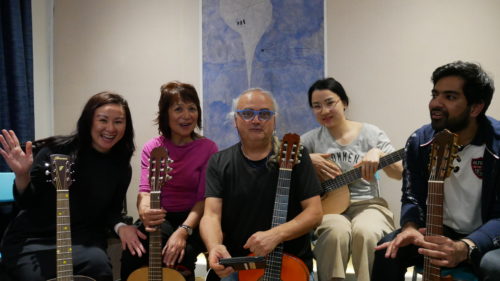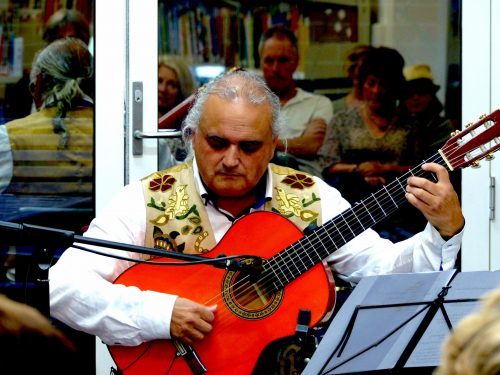Group guitar courses can be fun. You will enjoy the benefits of learning music but in a social setting,...
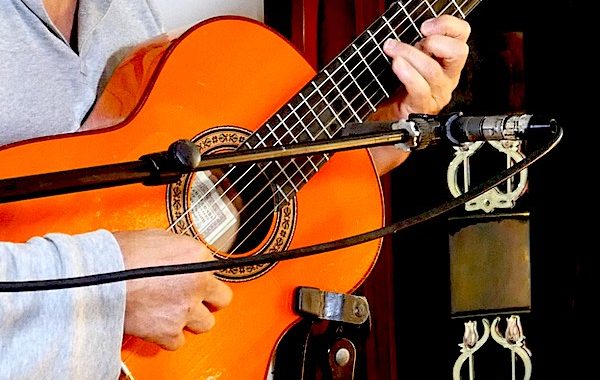
#2 Guitar Concert Preparation Tip
Concert Preparation
I want my concerts to flow and to be a constant surprise to the audience. So I improvise a lot
In this song towards the middle I improvise over two chords the A and D. This is how I prepare the solo. (Please view the full video on my youtube channel)
I start off soft and build up melodic phrases in sequence, until I reach my climax. Every time it is different and what keeps it together is the harmony and the rhythm.
What am I thinking of in the solo over the A and D chords?
The A chord lasts for two bars and the D chord for two bars, but their resolution is not where you may believe it should be, as indicated in the following diagram.
The rhythm of this song is based upon the flamenco style called Guajiras. The A chord resolves on bar 2 and the D chord on bar 5. Please note that the first two bars are ¾ time and the last two are 2/4 time.
My phrases melodically anticipate each of these chords by implying other chords of opposite tonal function. In this case I have used the subdominant G chord as my tool for varying tensión.

Isn't this too complicated?
Not really as all I do is recreate melodically the feeling I have in my mind which reflects how music works.
Theory books and improvisation
Most music theory books, music schools, courses, and instructors will teach you to relate your solo to the chords. This fact is very true but it is not exact as we do not necessarily define the chord as a yes or no, but we more or less define its harmonic tension , the feel of the chord relation to what proceeds
If you think about it, tension indicates that there exists an area of less tension. So if we vary the tension we create a flow, in a similar manner as when the wind blows from high to low areas of pressure. If the pressure is constant the wind will not blow, so we need constant variation to create the flow.
If you do not do this then your solos become boring and your studying also becomes too mechanical and may destroy what music is really all about which is feeling good.
You can only feel good if you flow and are not rigid in your assumptions.
In all my Sydney Guitar Lessons and Courses I share with you the importance of how to practice to get the maximum enjoyment out of your playing.
Would you do it differently if you were playing with others?
Yes of course, I would change a bit how I play but I would apply the same concepts. There is no need to change when you play with others. As a matter of fact the more independent you are in your paying the better the overall sound of the band.
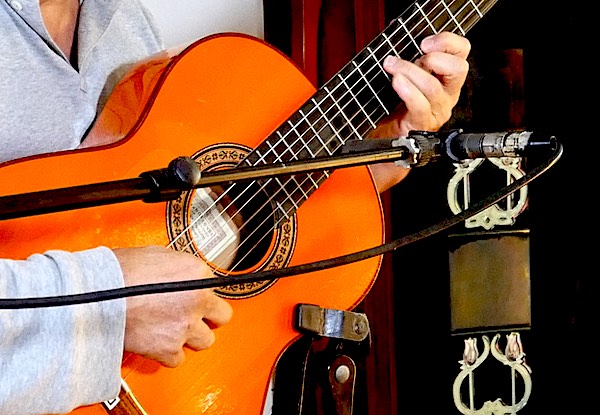
More chordal substitutions for concert preparation
Further on in the solo, in order to create more tension, I felt the need not to resolve to the I tonic chord but rather to the IIIm7, and after such I felt the need of increasing tension so I added the secondary dominant of the IIm7.
This does create the feel or more tension so the solo is now growing but I still needed more so what did I do.
The tension grows more and more
As a general rule we can increase tension by adding more harmonic tension, playing in a higher pitch or adding more rhythm.
Towards the end of the solo I decided to add more rhythm to the harmonic sequence. At this stage I am ready to conclude and go back to play the head of the tune and finish the song.
The final touch
In order to increase the tension I added a dominant pedal to the harmonic sequence. Pedal tones always add tension. A pedal tone can be any not of the scale but in this case I used the 5th of the scale.
Please note that if I was playing with other melodic or harmonic instruments, the rest of the band would react and also include a pedal in their playing.
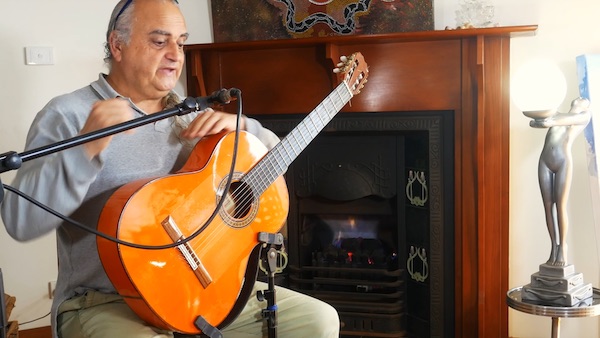
One approach of many
This video demonstrates one approach towards my concert preparation. In my youtube channel you can view more videos about how I prepare for my live performances.
My objective in my practice is to recreate the live performance which is what really counts, therefore all my practice has to be extremely musical. In other words I do not practice what I don´t do live.
For example when I play a song live I only have one go. So I practice playing songs in one go. Afterwards I take notes on issues that I was not prepared for, then I practice those separately but always in a context as in this video.
I have chosen to dedicate my practice and playing to this objective because it is much more fun and rewarding. This way I also avoid having to repeat scale and arpeggios 100 times as there is no need as none of that is ever played live.
So more than practicing a scale I practice how to use it in context and in a flow.
